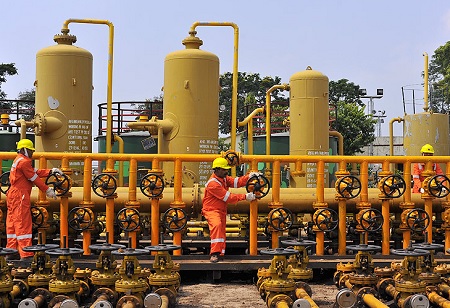
The government-run Oil and Natural Gas Corporation Ltd. (ONGC) is planning to airlift drilling equipment to Ladakh in order to restart its pilot project while also mapping India's geothermal energy resources, which have a potential of 10 gigawatts (GW). The country-wide geothermal energy potential of India is roughly 10 GW. The DG of ONGC Energy Centre, Ravi, stated, "We intend to map it and use the information to best exploit the clean and green energy."
The thermal energy produced and kept in the earth's crust is known as geothermal energy. It originates from heat produced during the planet's initial creation and the radioactive decay of elements. In addition to other things, ONGC and Iceland GeoSurvey (ISOR) signed a contract last month for the exploration and development of geothermal energy in India. The Ladakh project last year marked the beginning of the ISOR partnership.
Initial research has shown that Ladakh, Himachal, Gujarat, Andhra Pradesh, and Chhattisgarh are among the states with substantial geothermal resources. First, we are focusing on Ladakh, then Gujarat, and finally the south," he remarked. The original study was carried out by the Geological study of India (GSI) and the Ministry of New and Renewable Energy (MNRE). The places in Gujarat that have been identified include Cambay Basin and Ankleshwar. It's Kowthalam in Andhra Pradesh.
"Geothermal energy is safe, sustainable, and available constantly. It is environmentally friendly and sustainable. Otherwise, the majority of renewable energy sources aren't always accessible. We may move forward to a commercial-scale power plant if the pilot project is successfully completed, added Ravi. After experiencing issues with shallow reservoirs, the state-run oil exploration company was forced to halt its trial project at Puga in Ladakh last year. But this year, the business intends to restart drilling at the Puga location.
The Ladakh valley's Puga is only accessible between May and October due to the weather, but ONGC officials are currently dealing with logistical difficulties because multiple bridges are being built below them. The oil business has now started discussions with the Indian Army and the Border Roads Organisation (BRO) to see if the tools and parts can be transported so that drilling can start.
"If drilling starts this year, we may anticipate the 1 MW trial plant going online the following year. Once Puga is a success, drilling at Chumathang, 12 km away from Puga, can start. A 100 MW power plant may be built if the two reservoirs could be connected, according to the DG. "However, we can only know the actual capacity after drilling and doing the reservoir study, checking the production and flow," he added.
We use cookies to ensure you get the best experience on our website. Read more...